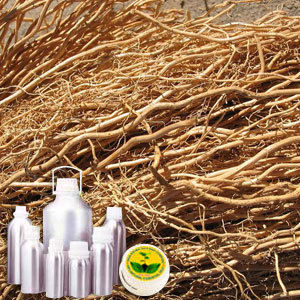Botonical Name | : | Vetiveria Zizanoides | |
CAS # | : | 8016-96-4 | |
Country of Origin | : | Indonesia | |
Color & Odor | : | Yellowish to amber brown viscous liquid with Earthy, heavy woody, sweet odor | |
Solubility | : | Insoluble in water, soluble in alcohol and oils | |
Specific Gravity | : | 0.975 - 1.035 @ 25oC | |
Optical Rotation | : | +14o to +45o @ 27oC | |
Refractive Index | : | 1.520 - 1.530 @ 20oC | |
Flash Point | : | > 100oC | |
Major Constituents | : | Beta-vetivenene, vetivones, khusimol, vetiselinenol | |
Plant Part Used | : | Root | |
Extraction Method | : | Steam Distillation |
DESCRIPTION:
Vetiver Oil is obtained from the white root of specific species of grass having tangled root pattern. In countries like Sri Lanka and India, this grass is required to weave mat. The extracted oil has wide application in perfume producing arena. CONSTITUENTS:
Vetiver Root Oil is enriched with isovalencenol, ketones, vetivone, alpha-vetivone, khusimol, beta-vetivone, nootkatone and vetiver oil. AROMATIC SUMMARY / NOTE / STRENGTH OF AROMA:
Long lasting powerful fragrance of this oil can be classified under top note aroma. The smell of this oil characterizes the scent of wood extracted oils. This oil is basically used to produce personal care items for men. BLENDS WITH:
Vetiver Essential Oil can be mixed with essential oils of juniper, ginger, chamomile, sandalwood, rose, frankincense, lemongrass, spikenard, ylang-ylang, patchouli, lavender, jasmine, vanilla and cedar wood. COMMON NAMES:
The oil of vetiver root is also referred as khus oil and vetiveria zizanoides oil. USES:
Tamil term 'vetiver' denotes 'hatcheted up' which is the process of collecting roots.The base note of this aromatic oil is used to produce fragrances and aromatherapy items. The revitalizing smell of Vetiver Oil has soothing effects on mind and body. 


































